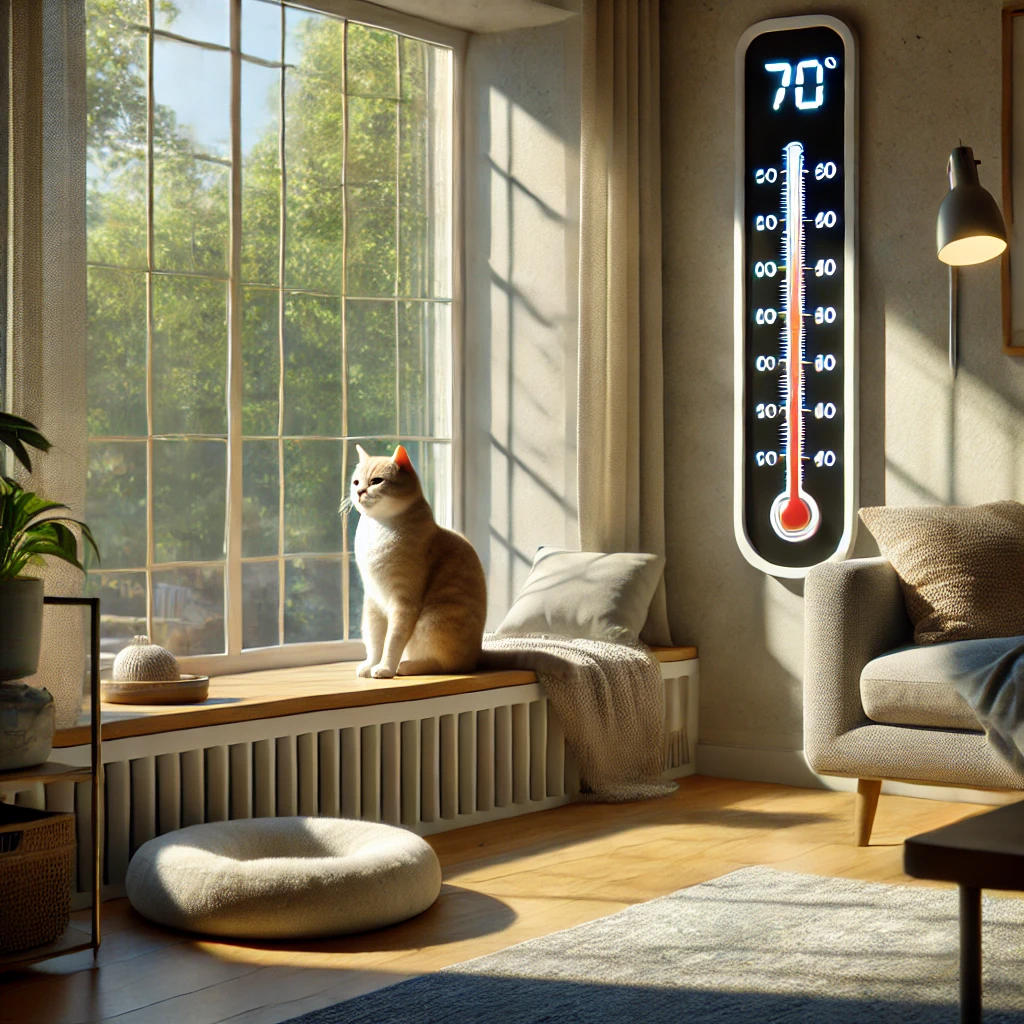Ever wonder if your feline friend is feeling too warm or too chilly? Let’s explore how to create the perfect climate for your cat’s comfort!
What Is the Optimal Temperature for Cats?
Cats are quite adaptable, but they have a preferred temperature range. The ideal room temperature for cats is between 65°F and 75°F (18°C to 24°C).
Every cat is different—your Maine Coon might like it on the cooler side, while your hairless Sphynx may prefer things a bit warmer.
How to Tell If Your Cat Is Feeling Cold
Look out for these signs indicating your cat might be cold:
– Curling up tightly
– Seeking warm spots like sunny windows
– Tucking their paws underneath their body
– Shivering or trembling
– Seeking extra cuddles
How to Tell If Your Cat Is Feeling Hot
Signs that your cat might be overheating include:
– Laying flat on cool surfaces
– Grooming more than usual
– Panting or drooling
– Warm ears and paw pads
– Appearing lethargic
How to Create Cozy Spaces All Year Round
Tips for Winter
- Place soft blankets in their favorite spots
- Keep beds away from drafts
- Consider getting a heated cat bed
- Ensure consistent indoor heating
- Prevent cold air from coming through windows
Solutions for Summer
- Provide elevated resting spots
- Make sure there’s always fresh water available
- Create shaded areas
- Use cooling mats
- Consider using room fans
Things to Keep in Mind
Remember these factors when managing your cat’s environment:
– Age (senior cats often need warmer temperatures)
– Coat type
– Health conditions
– Activity level
– Weight
How to Adjust Temperatures
Begin by making small changes:
1. Observe your cat’s behavior carefully
2. Adjust the temperature gradually by 2-3 degrees
3. Offer both warm and cool resting options
4. Check the room temperature regularly
When to Consult a Vet
Contact your veterinarian if your cat:
– Is extremely lethargic
– Stops eating
– Has trouble breathing
– Shows signs of heatstroke
– Doesn’t respond to temperature adjustments
Final Thoughts
Creating a comfortable temperature for your cat is simple. Pay attention to their behavior, make small adjustments, and provide them with options to find their comfort zone.
A content cat is a happy cat! Keep a close eye on your furry companion; they’ll show you what makes them most comfortable

